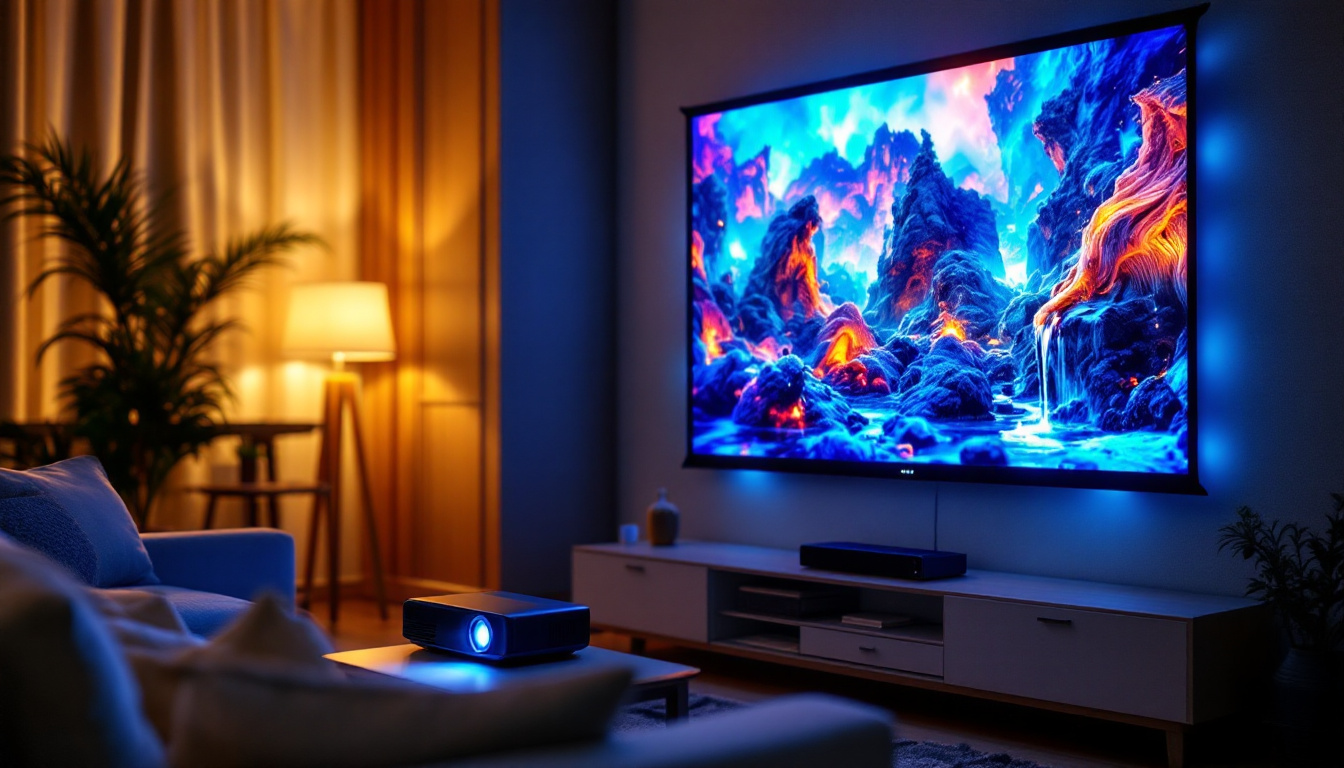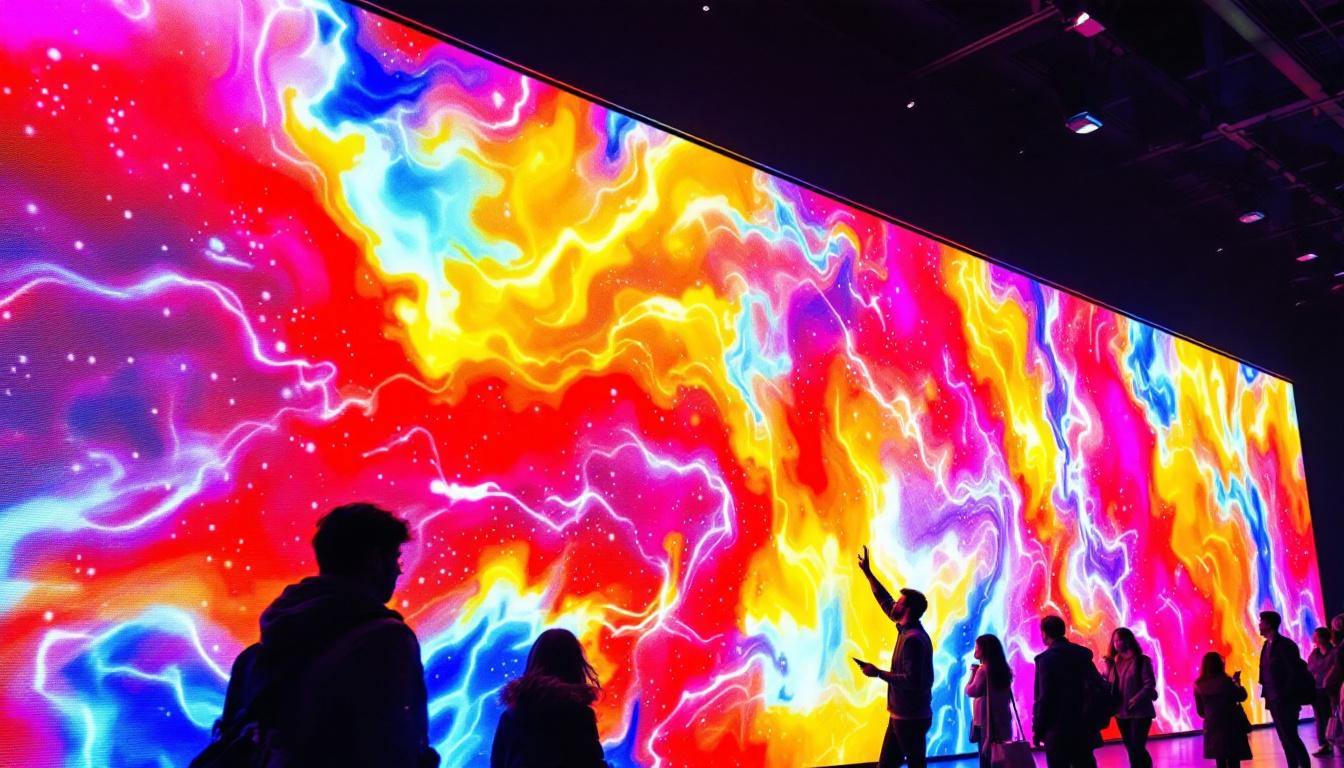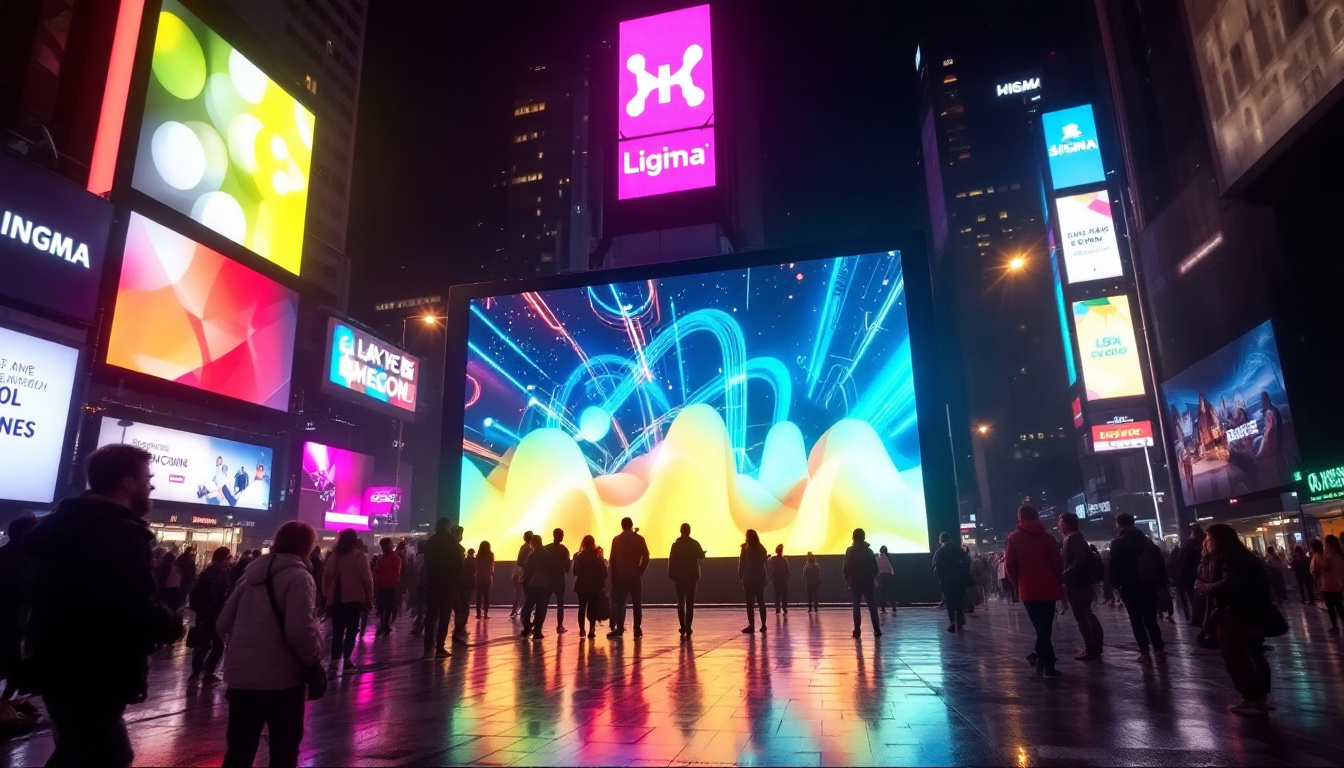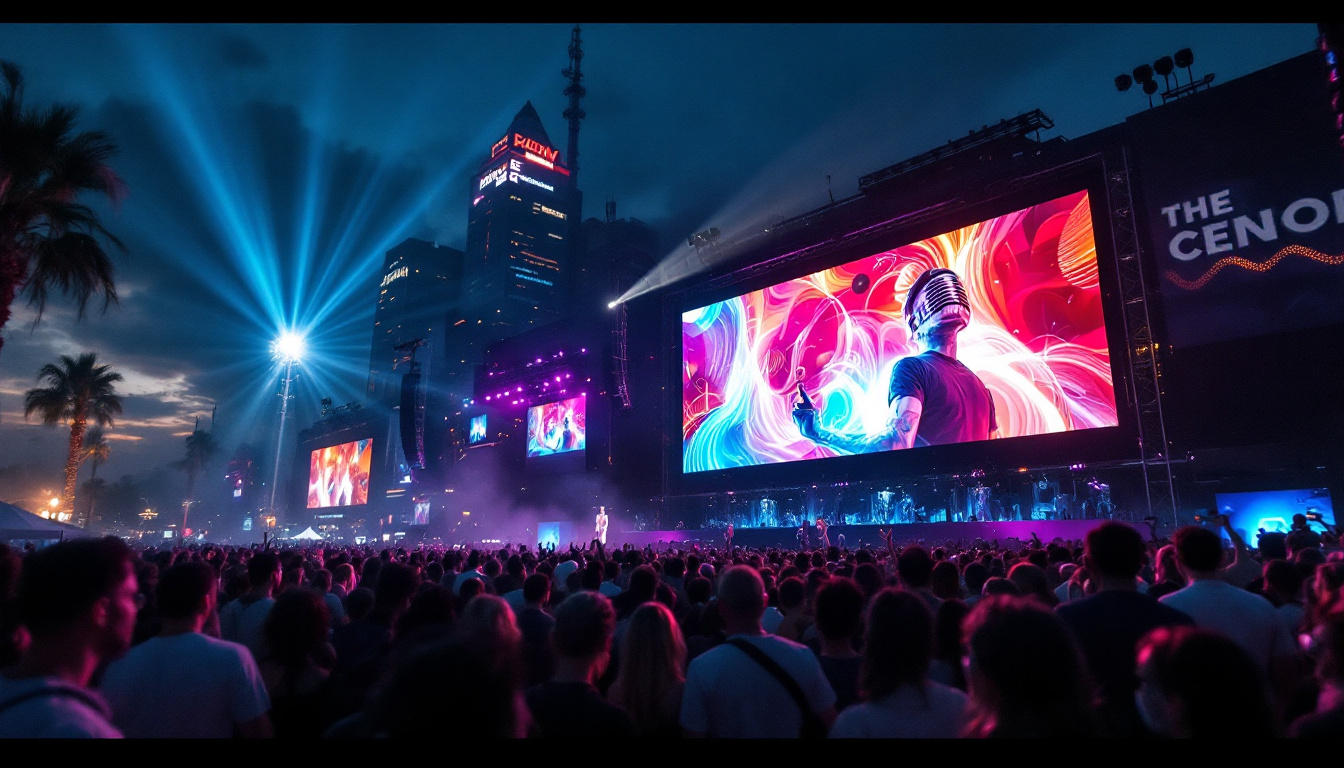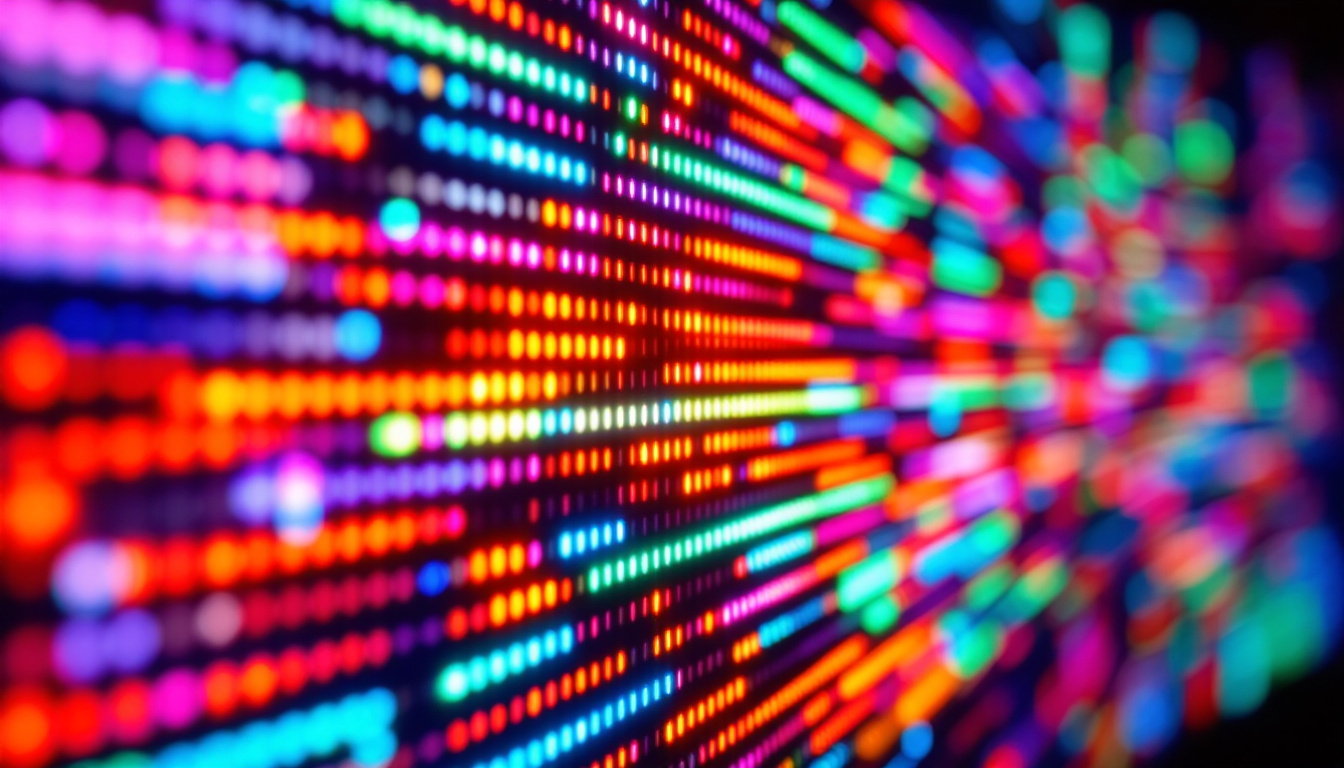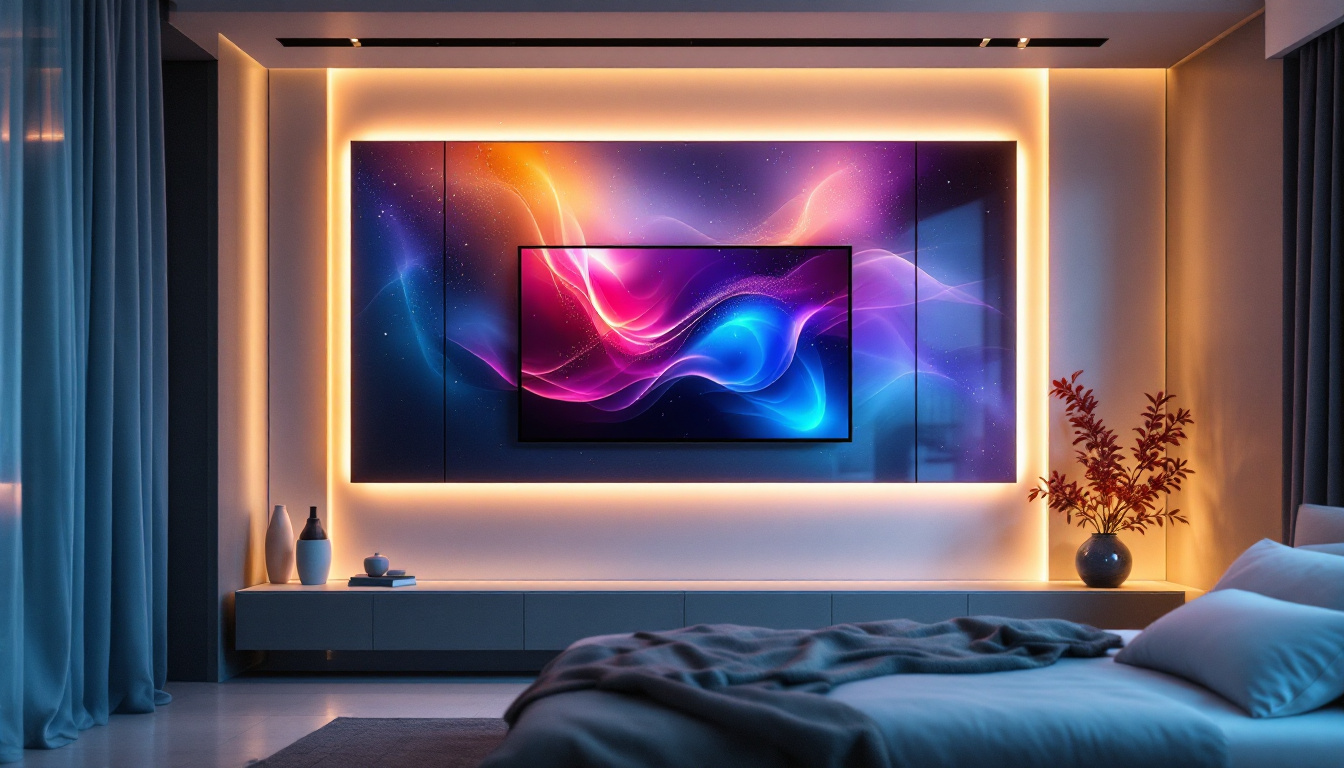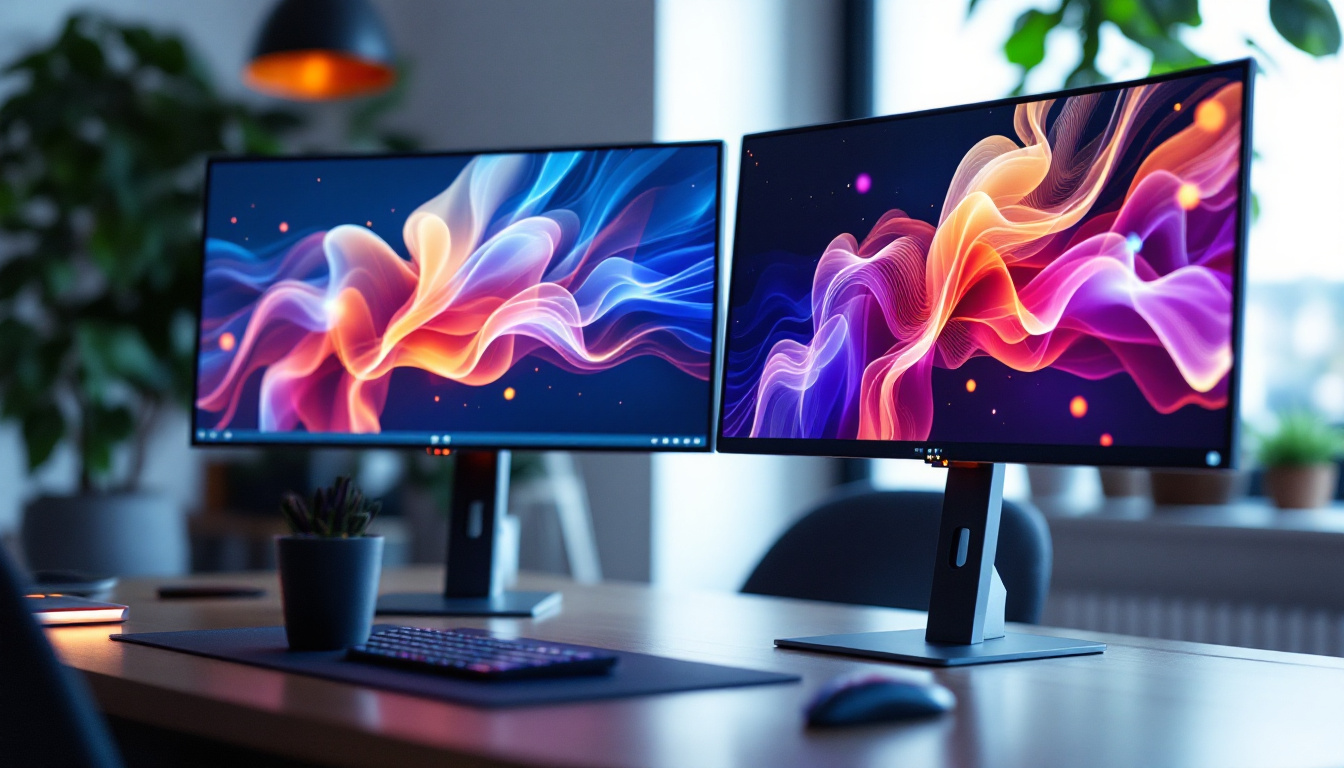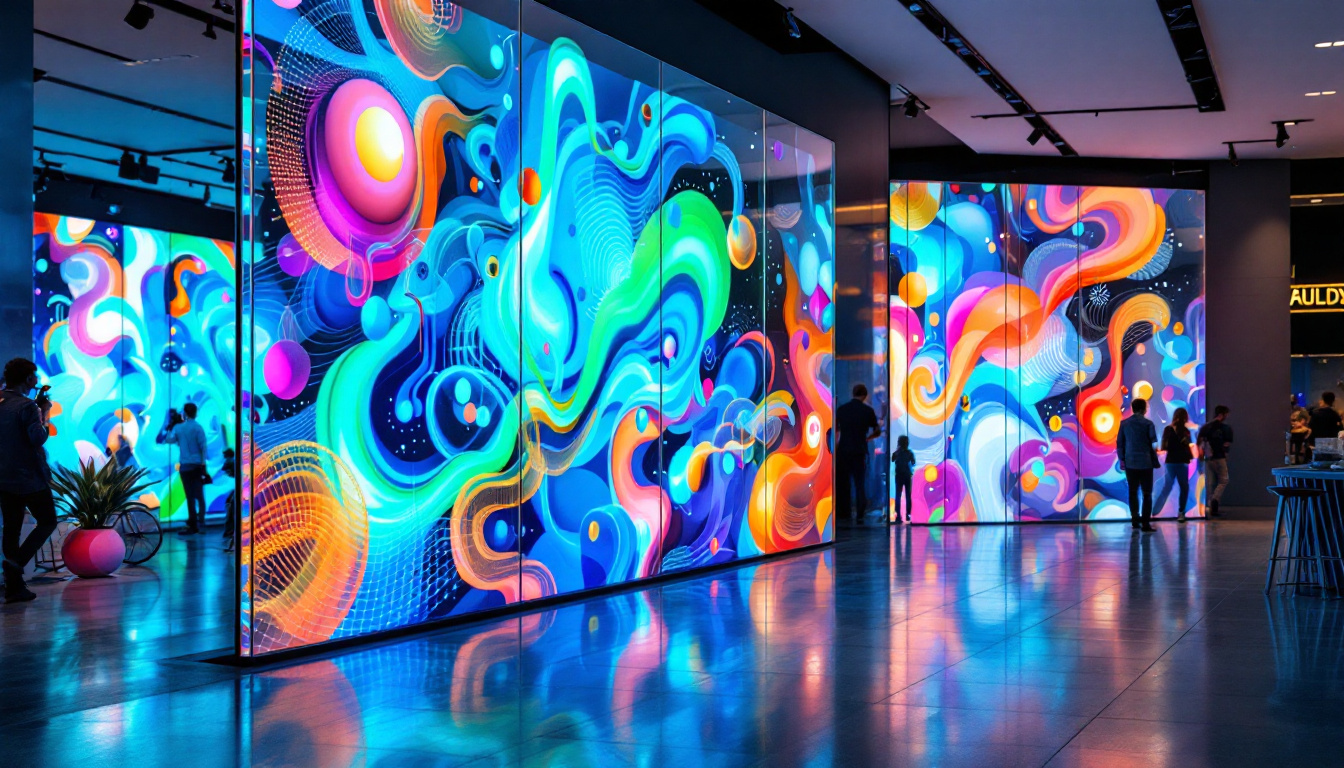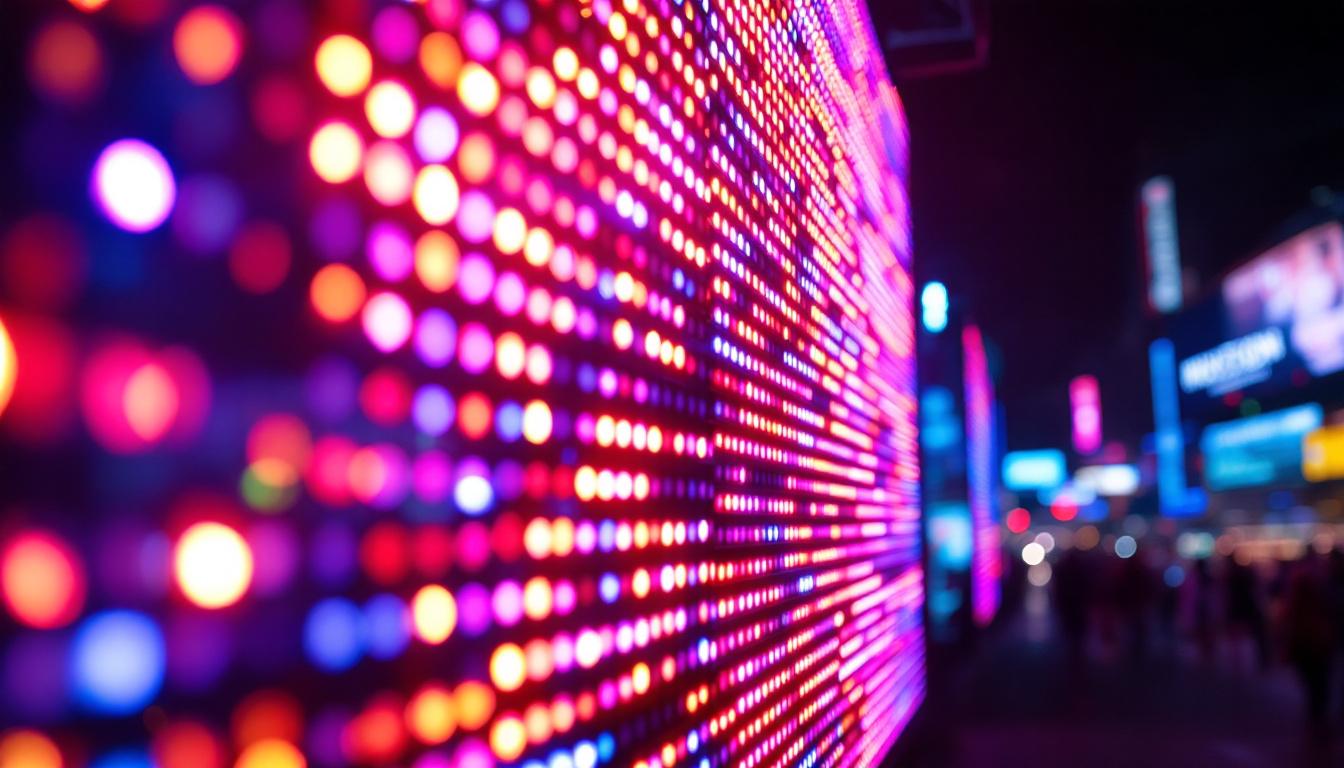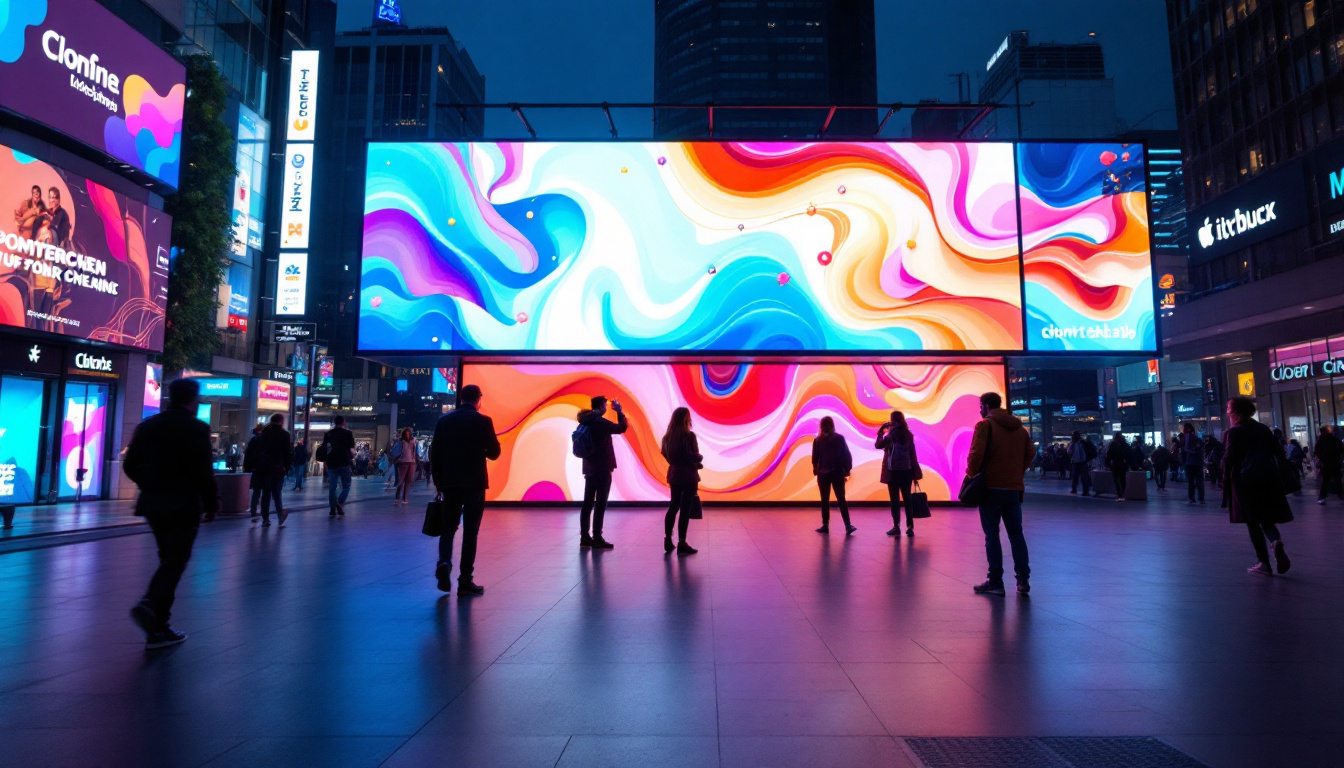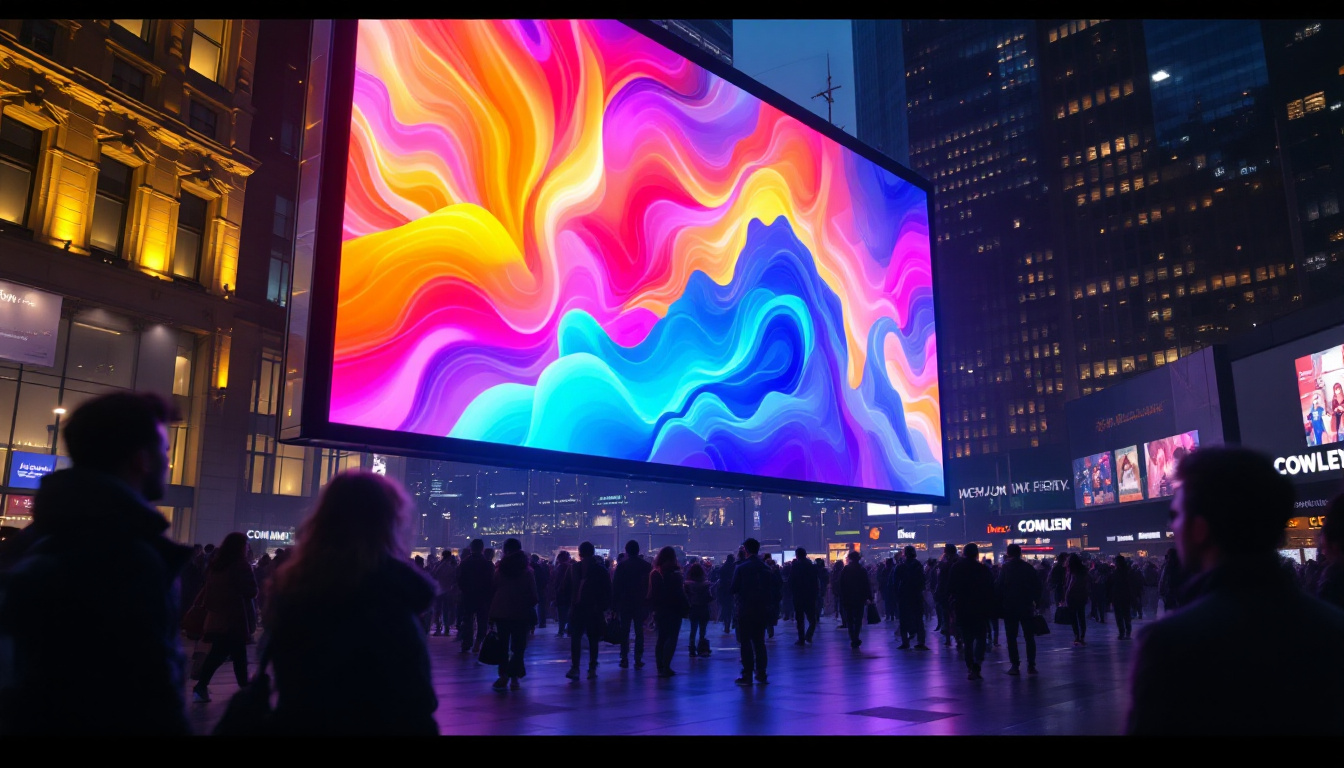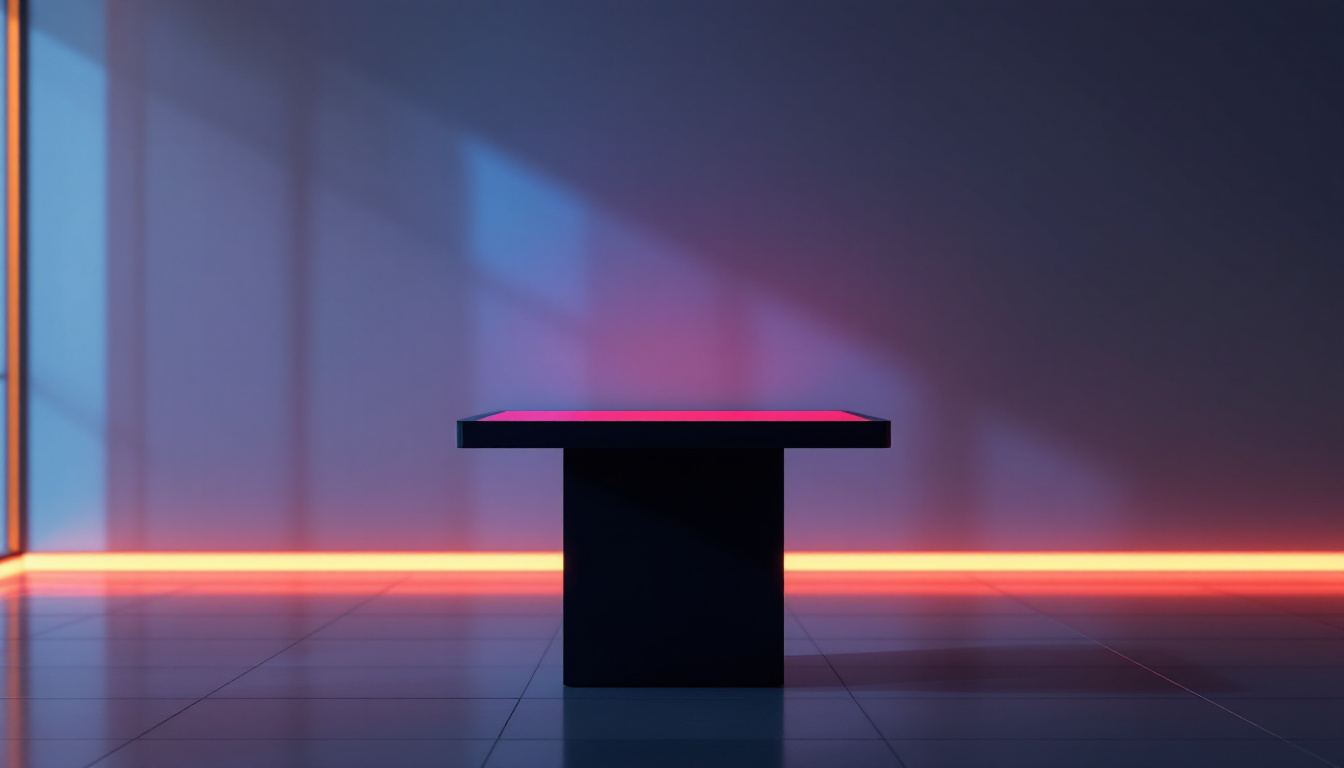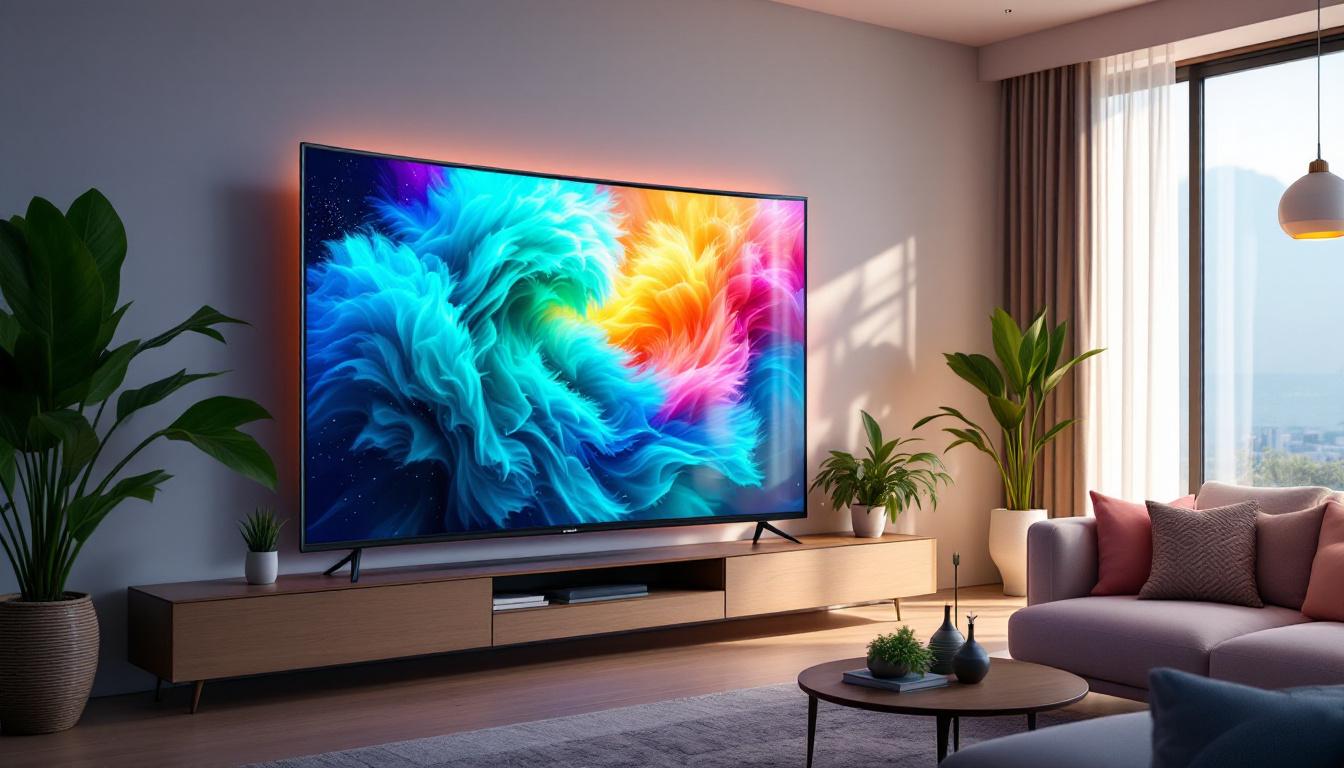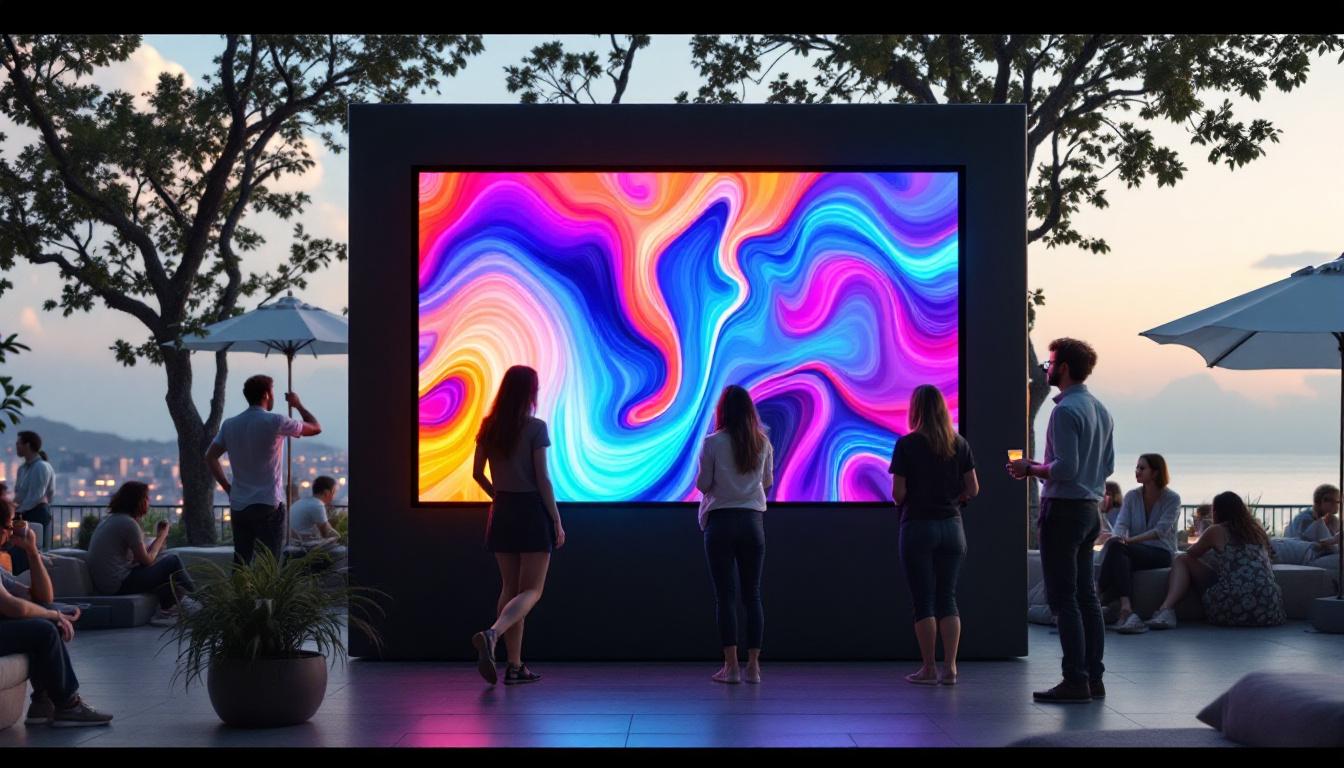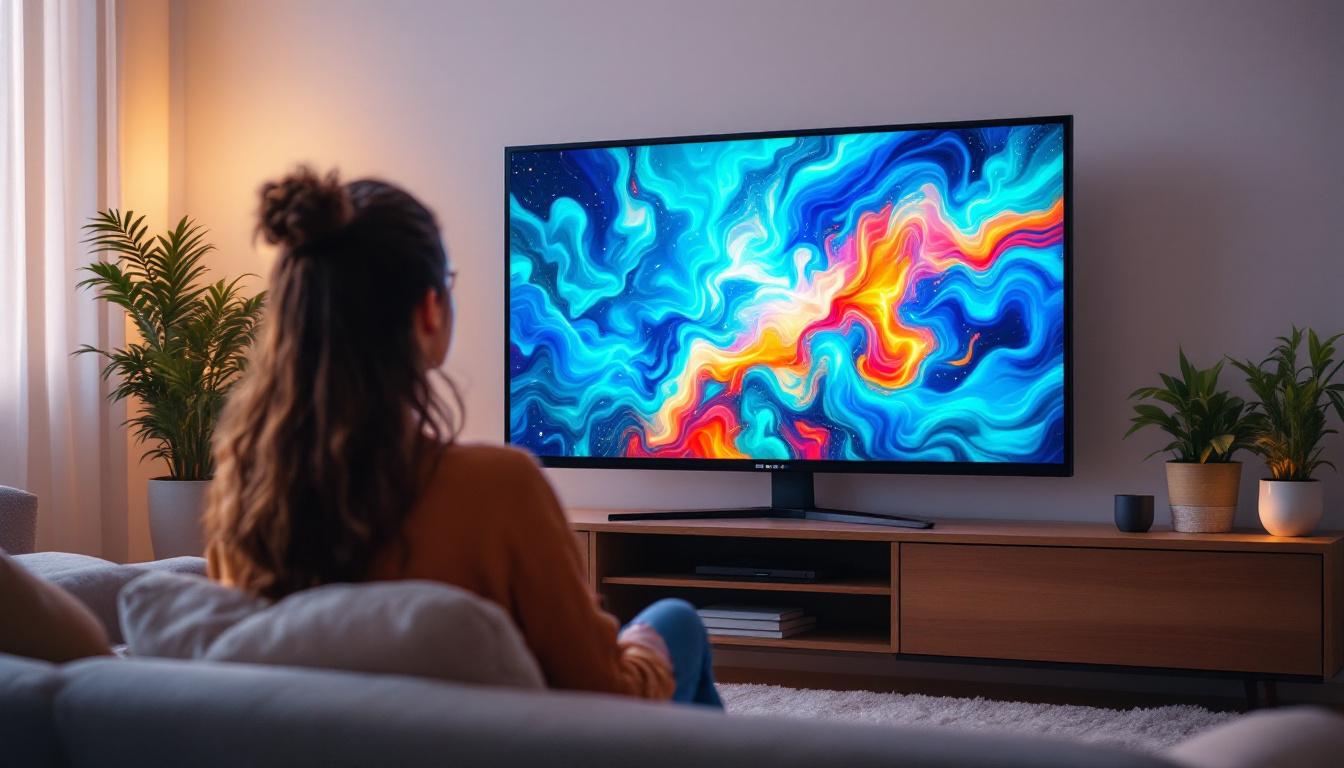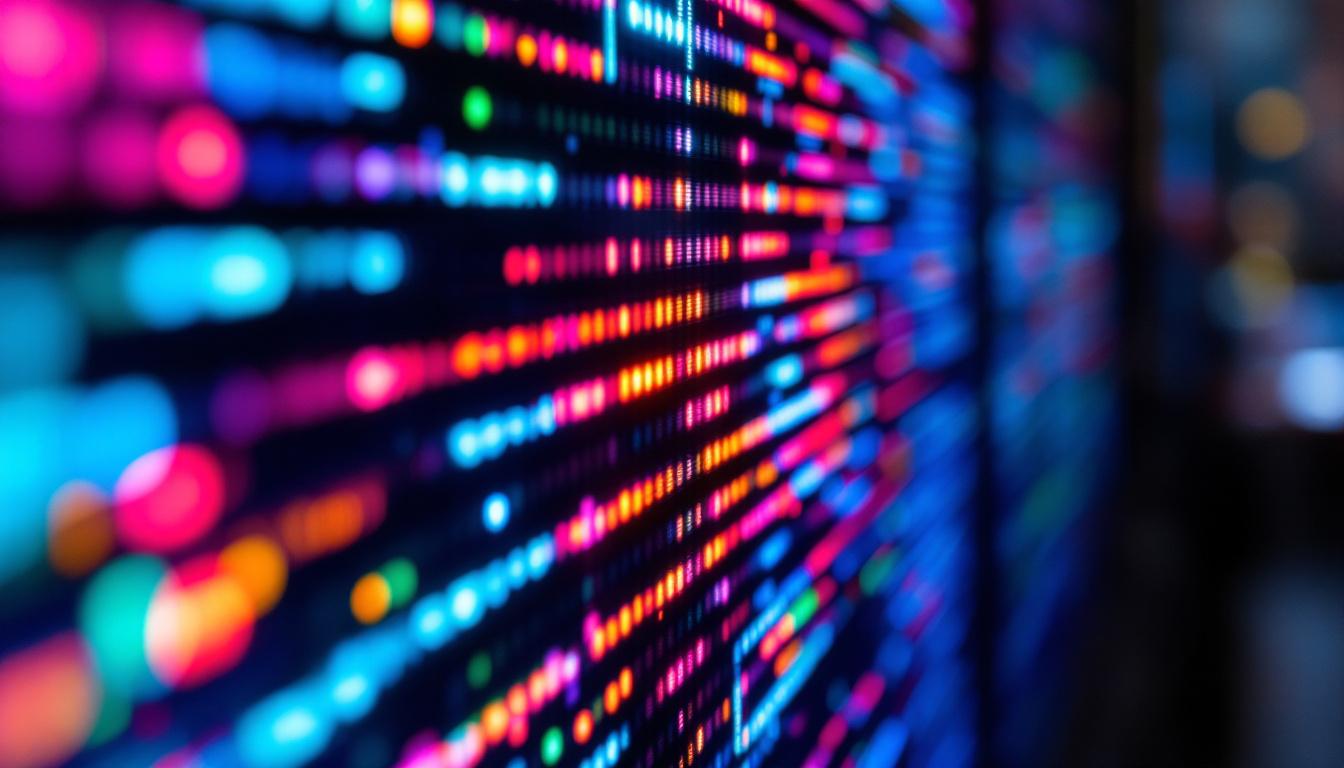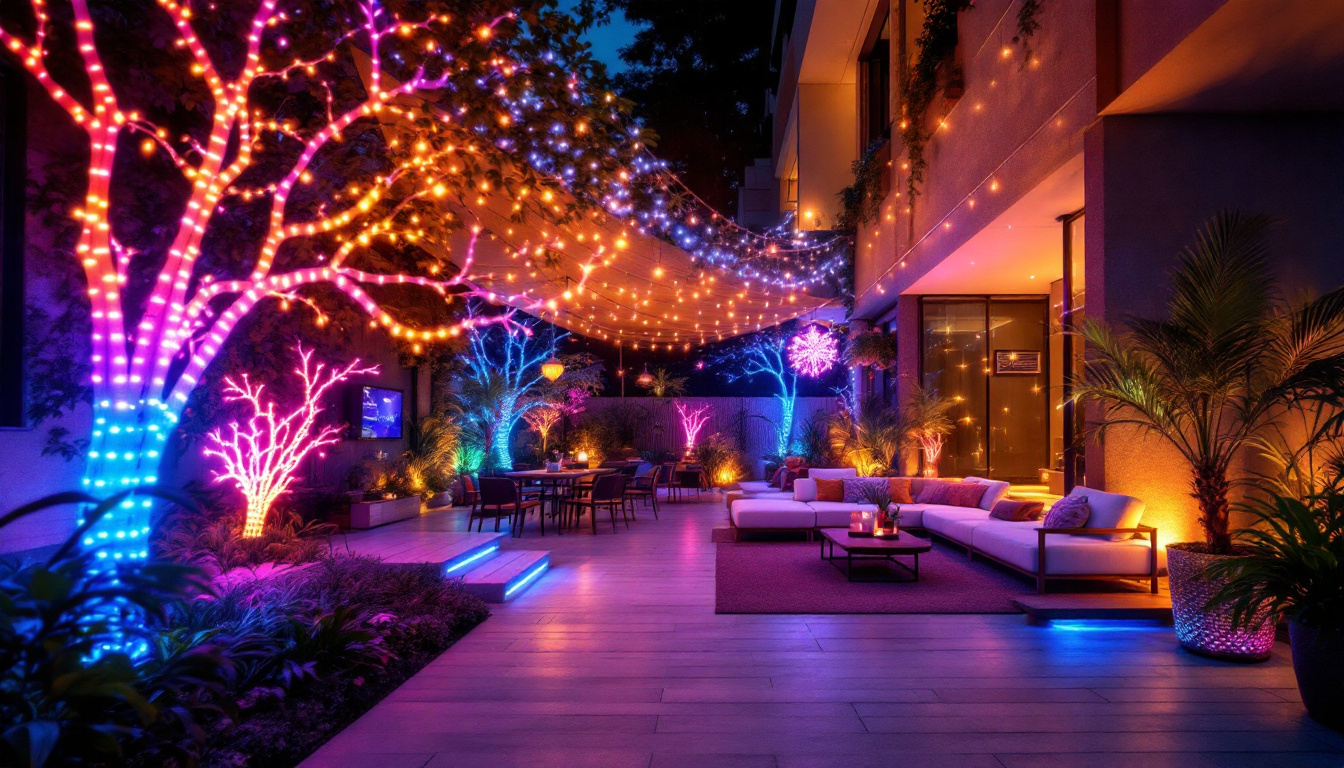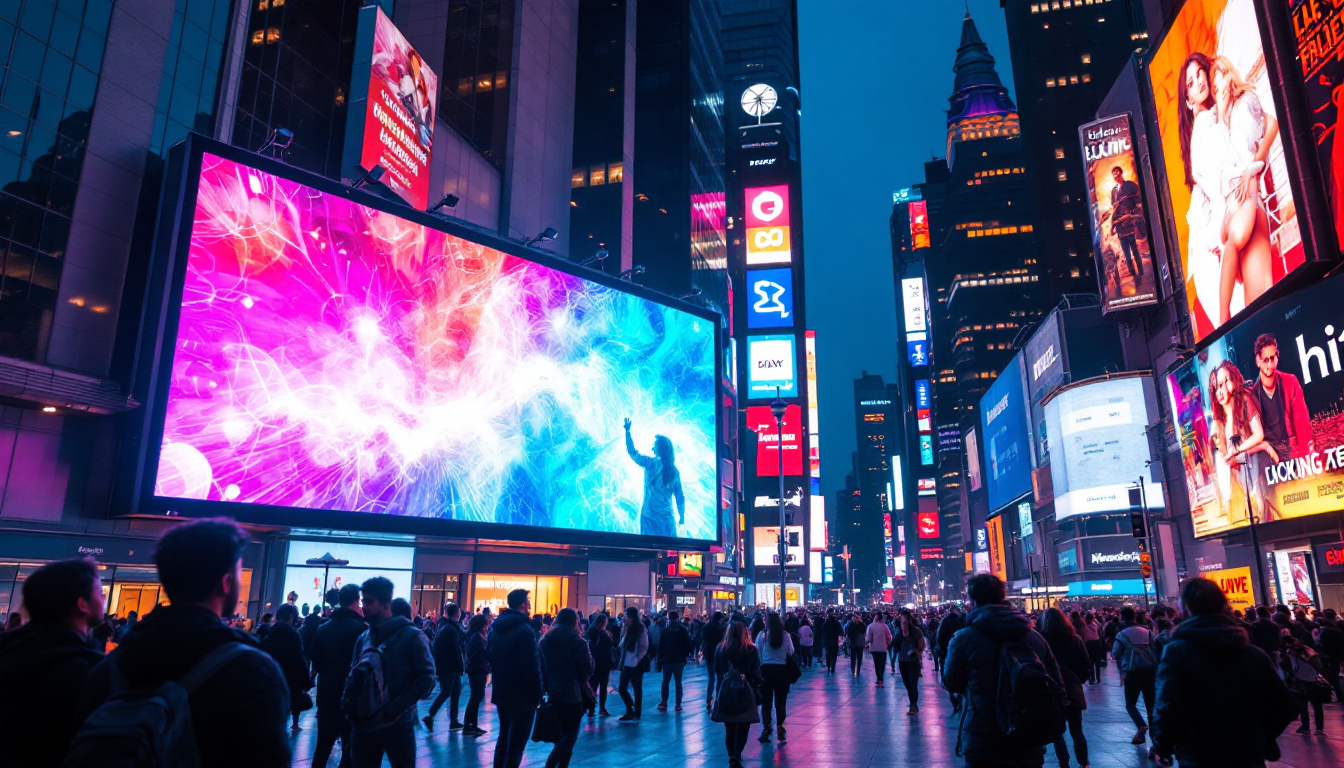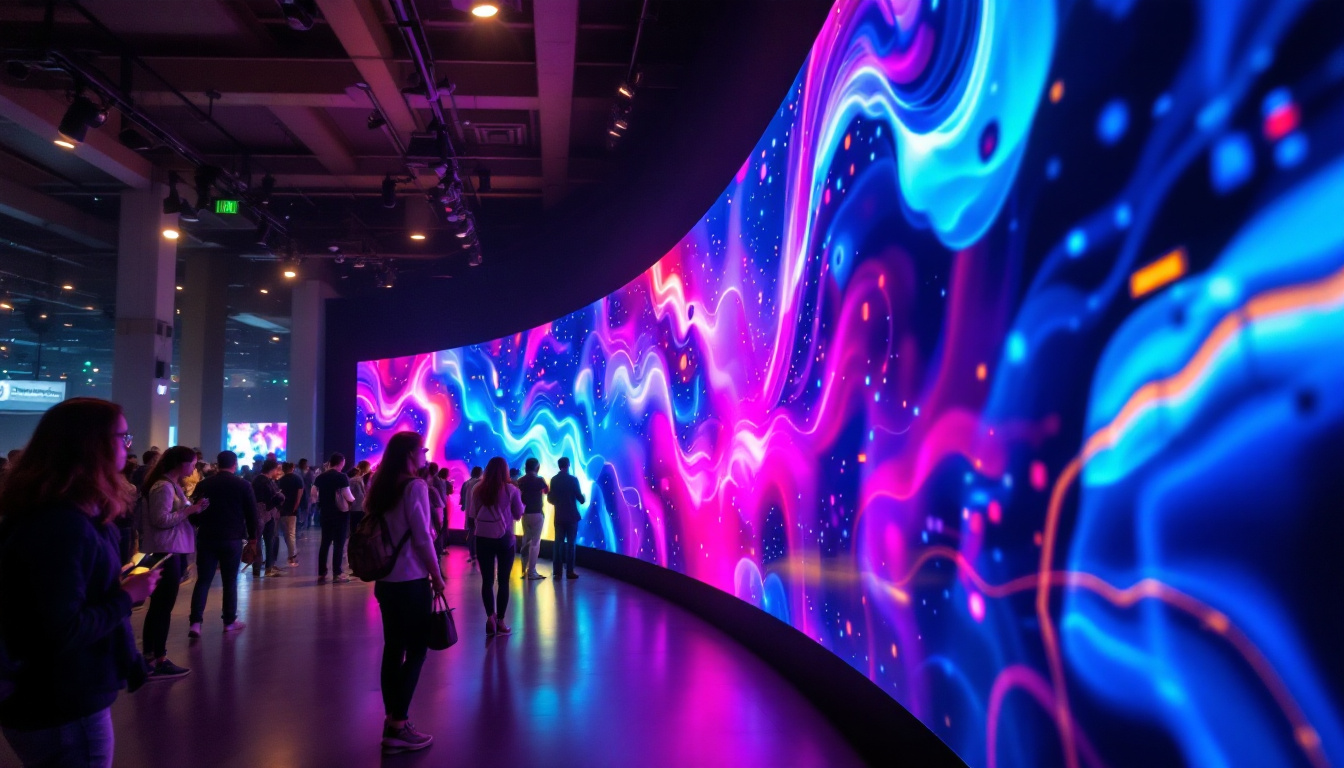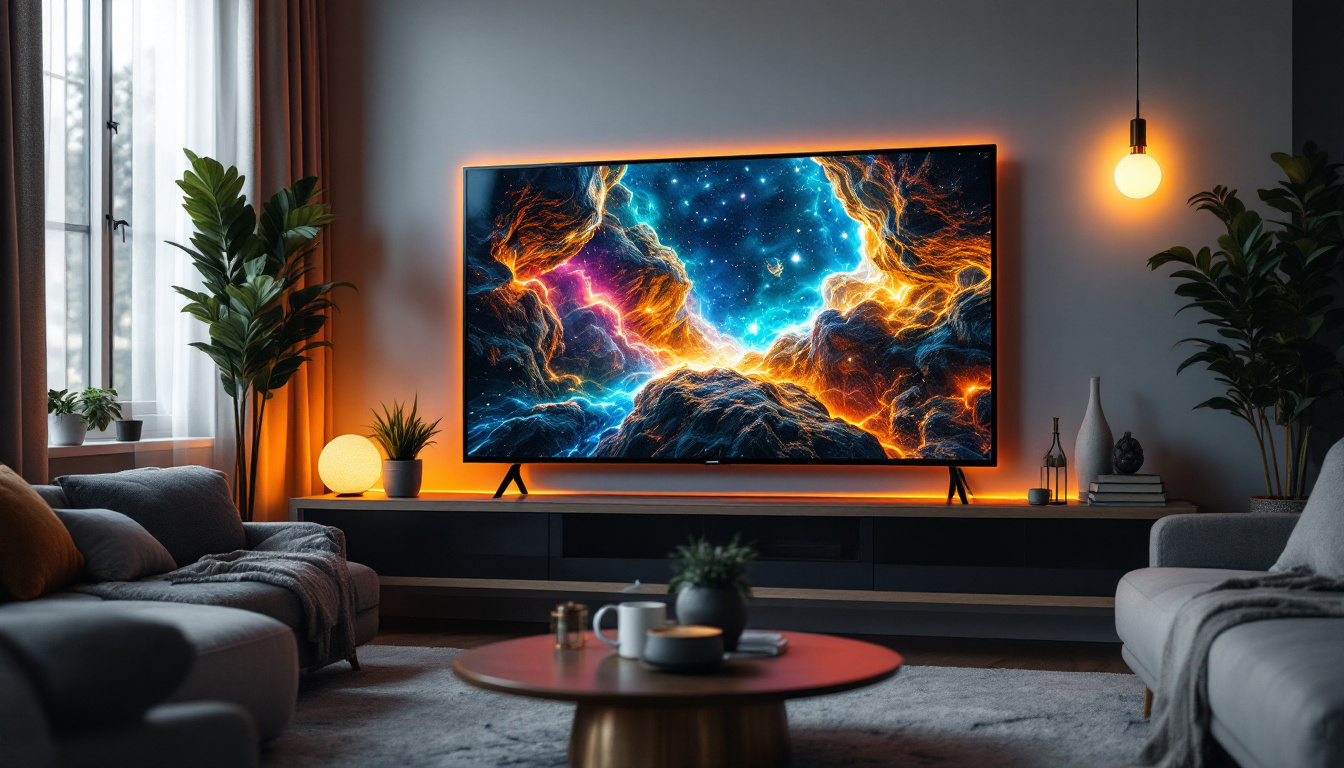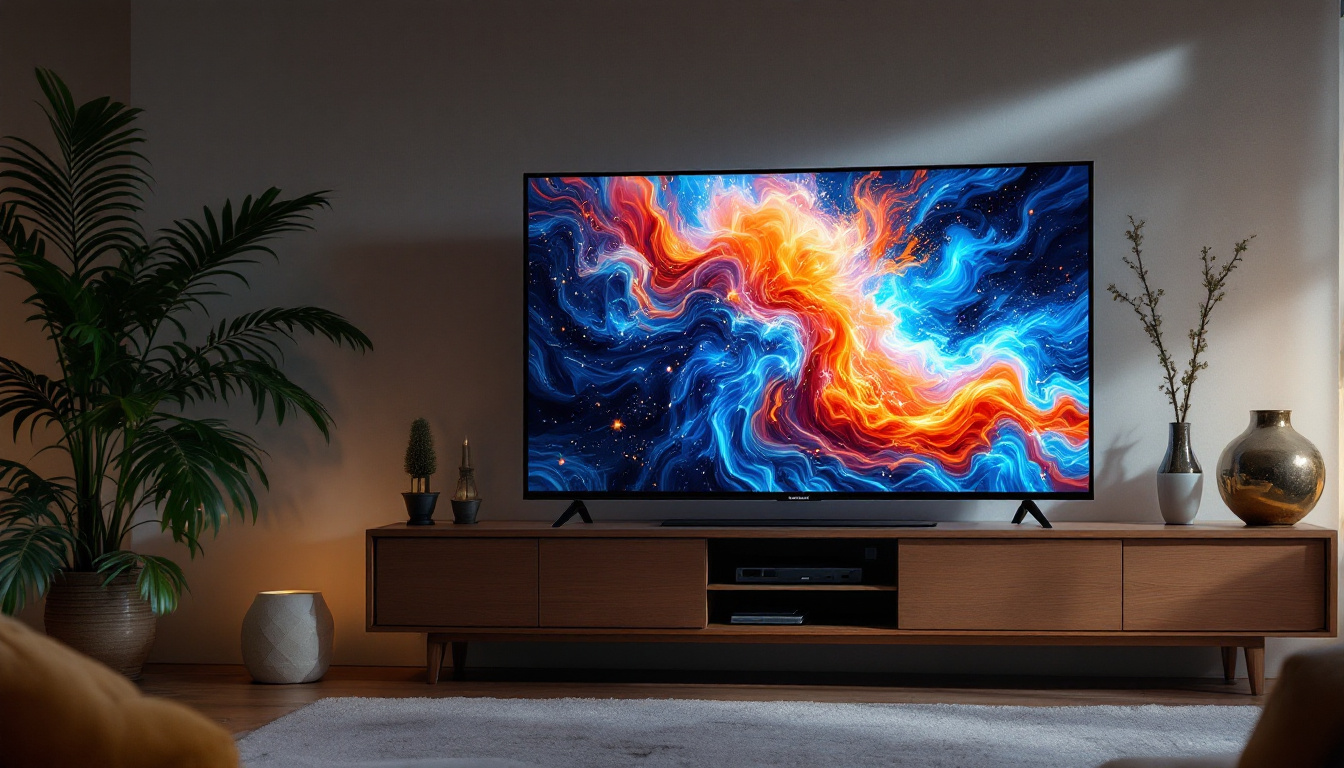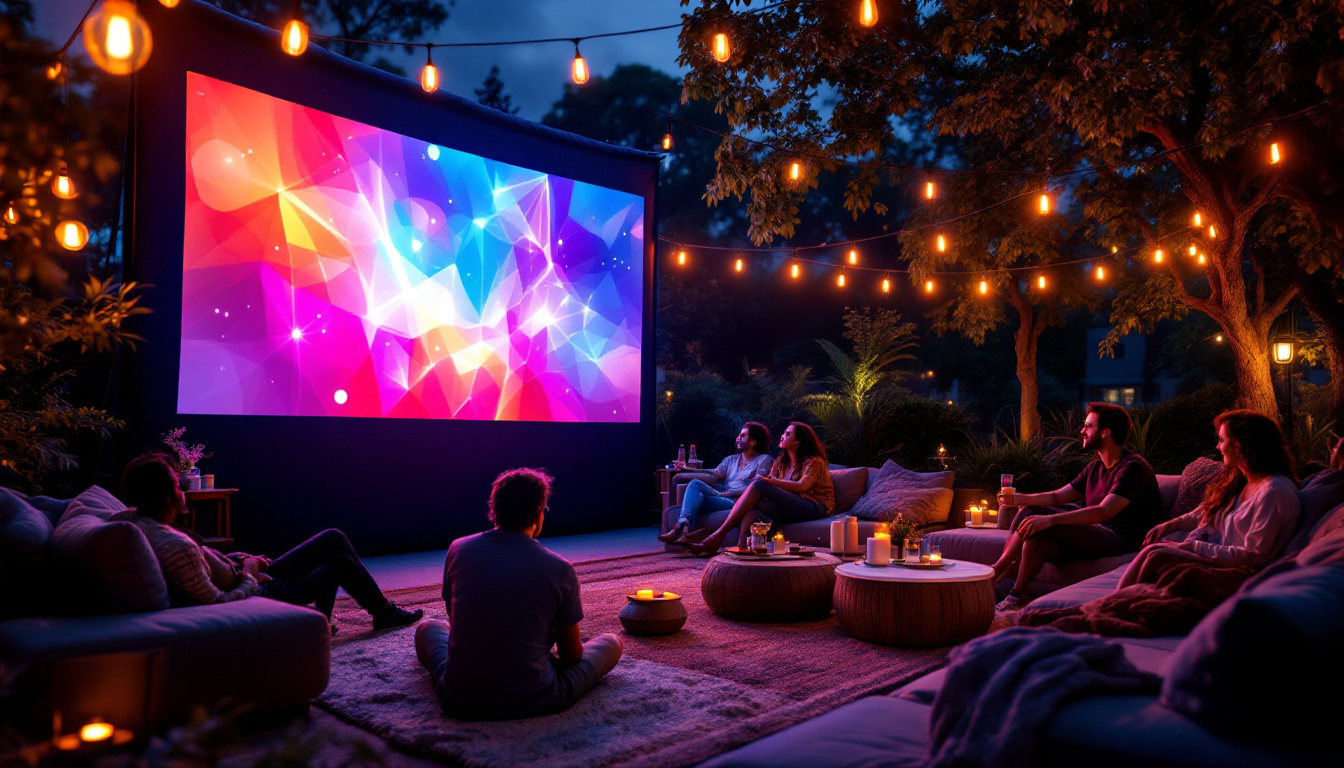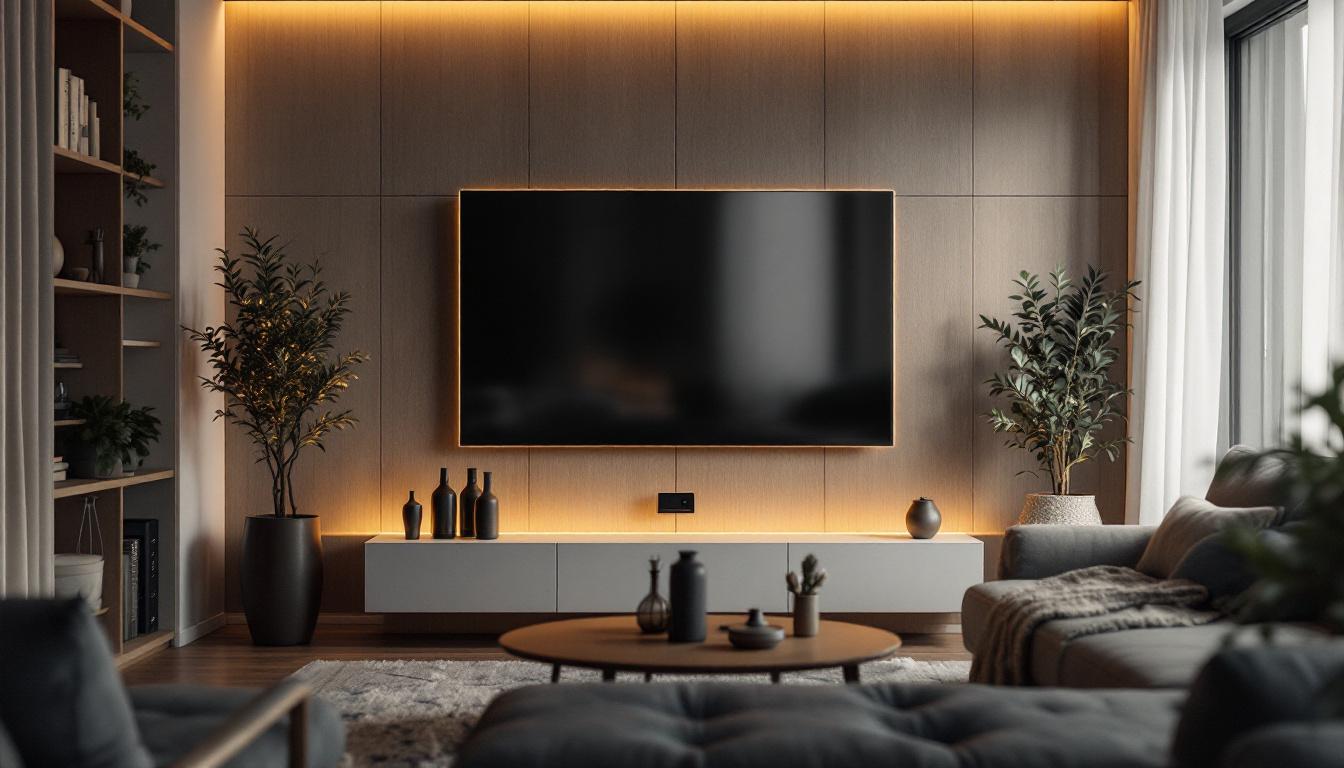In the realm of visual technology, fixed screen projectors equipped with LED displays have emerged as a preferred choice for both home and commercial environments. These devices offer a unique blend of versatility, efficiency, and superior image quality, making them a staple in modern audiovisual setups. This article delves into the intricacies of fixed screen projectors with LED displays, exploring their functionality, benefits, and the technology that powers them.
Understanding Fixed Screen Projectors
Fixed screen projectors are designed for permanent installation, providing a reliable solution for projecting images and videos in a variety of settings. Unlike portable projectors, which are designed for mobility, fixed screen projectors are typically mounted on walls or ceilings, offering a more stable and consistent viewing experience. This stability is particularly beneficial in environments where the projector may be used frequently, as it eliminates the need for repeated setup and adjustments, allowing users to focus on the content being presented rather than the technology itself.
Key Features of Fixed Screen Projectors
One of the defining characteristics of fixed screen projectors is their ability to deliver high-quality images. These projectors often feature advanced optics and high-resolution capabilities, ensuring that the projected content is sharp and vibrant. Additionally, many models come equipped with features such as keystone correction and lens shift, which allow for greater flexibility in installation and image adjustment. This adaptability is crucial in spaces where the projector’s position may not be ideal, enabling users to achieve the perfect image alignment without the need for extensive physical adjustments.
Another notable feature is the integration of LED technology. LED projectors utilize light-emitting diodes as their primary light source, which offers several advantages over traditional lamp-based projectors. This technology not only enhances brightness and color accuracy but also extends the lifespan of the projector, reducing maintenance costs over time. Furthermore, LED projectors are more energy-efficient, making them a more environmentally friendly option for consumers who are conscious about their carbon footprint.
Applications of Fixed Screen Projectors
Fixed screen projectors are widely used in various applications, from educational institutions to corporate environments. In classrooms, they facilitate interactive learning by allowing educators to display multimedia content clearly and effectively. Teachers can engage students with dynamic presentations that incorporate videos, animations, and interactive software, thus enhancing the overall learning experience. In corporate settings, these projectors are essential for presentations, enabling professionals to convey information to larger audiences without compromising on quality. They can be seamlessly integrated with video conferencing tools, making remote collaboration more effective and visually engaging.
Moreover, fixed screen projectors have found their way into home theaters, where they create immersive viewing experiences. With the rise of streaming services and high-definition content, more homeowners are investing in these projectors to transform their living spaces into cinematic environments. The ability to project images onto a large screen allows for a more engaging viewing experience, making movie nights and gaming sessions more enjoyable. Additionally, many modern fixed screen projectors support 4K resolution and HDR content, ensuring that users can enjoy the latest advancements in visual technology right in their own homes. As a result, the demand for high-quality fixed screen projectors continues to grow, reflecting a shift in how we consume media and entertainment in our daily lives.
The Technology Behind LED Displays
LED displays have revolutionized the way images are projected. By utilizing light-emitting diodes, these displays offer numerous benefits that enhance the overall viewing experience. Understanding the technology behind LED displays is crucial for appreciating their impact on fixed screen projectors.
How LED Technology Works
LED technology operates by passing an electric current through a semiconductor material, which then emits light. This process is significantly different from traditional projection methods that rely on lamps. The result is a more efficient light source that produces brighter images with improved color reproduction.
LED projectors typically use three separate light sources—red, green, and blue (RGB)—to create a full spectrum of colors. This RGB configuration allows for greater accuracy in color representation, making images appear more lifelike and vibrant. Additionally, LED projectors can achieve higher brightness levels without the need for bulky cooling systems, making them more compact and easier to install.
Advantages of LED Displays
The advantages of LED displays extend beyond just image quality. One of the most significant benefits is their energy efficiency. LED projectors consume less power compared to traditional lamp-based projectors, which not only reduces electricity costs but also contributes to a lower carbon footprint.
Furthermore, LED displays have a longer lifespan, often lasting up to 20,000 hours or more. This longevity means that users can enjoy high-quality projections without the frequent need for bulb replacements, which can be both costly and inconvenient.
Comparing LED Projectors to Traditional Projectors
When considering a fixed screen projector, it is essential to compare LED projectors with traditional lamp-based models. Each type has its own set of advantages and disadvantages, which can influence the decision-making process for potential buyers.
Brightness and Color Accuracy
LED projectors generally outperform traditional projectors in terms of brightness and color accuracy. While lamp-based projectors may require additional adjustments to achieve optimal color balance, LED projectors provide consistent color output throughout their lifespan. This consistency is particularly important for applications where color fidelity is critical, such as graphic design or video editing.
Moreover, LED projectors can maintain their brightness levels over time, whereas traditional projectors may experience a decline in brightness as the lamp ages. This can lead to a less satisfying viewing experience, especially in environments with ambient light.
Maintenance and Longevity
Maintenance is another area where LED projectors excel. With their longer lifespan and reduced need for replacements, users can save both time and money. In contrast, traditional projectors often require regular bulb changes, which can be a hassle, especially for fixed installations.
Additionally, LED projectors typically have fewer components that can fail, resulting in lower overall maintenance costs. This reliability makes them an attractive option for users who want a hassle-free experience.
Choosing the Right Fixed Screen Projector
When selecting a fixed screen projector, several factors should be considered to ensure the best fit for specific needs and preferences. Understanding these factors can help users make informed decisions that align with their requirements.
Resolution and Image Quality
Resolution is a critical aspect of any projector. Higher resolutions, such as Full HD (1920×1080) or 4K (3840×2160), provide sharper images and greater detail. For applications involving detailed graphics or video content, investing in a projector with higher resolution capabilities is advisable.
In addition to resolution, users should also consider the projector’s contrast ratio, which affects the depth and richness of colors. A higher contrast ratio results in more vivid images, enhancing the overall viewing experience.
Throw Distance and Screen Size
The throw distance of a projector refers to the distance between the projector and the screen. Understanding the throw distance is essential for determining the appropriate installation location and screen size. Fixed screen projectors come in various throw ratios, allowing for flexibility in installation based on the available space.
Choosing the right screen size is equally important. A screen that is too small may result in a cramped viewing experience, while a screen that is too large can overwhelm the space. It is advisable to consider the viewing distance and room dimensions when selecting the screen size.
Installation and Setup Considerations
Proper installation and setup are crucial for maximizing the performance of a fixed screen projector. A well-executed installation can significantly enhance the viewing experience, while poor installation may lead to subpar image quality and user frustration.
Mounting Options
Fixed screen projectors can be mounted in various ways, including ceiling mounts, wall mounts, or even shelf placements. The choice of mounting option will depend on the room layout, available space, and desired viewing angle. Ceiling mounts are popular for their ability to save floor space and provide a clean, unobtrusive look.
When mounting a projector, it is essential to ensure that the lens is aligned with the center of the screen. This alignment helps prevent distortion and ensures a clear, focused image. Additionally, consider the cable management options to keep the installation neat and organized.
Calibration and Adjustment
Once the projector is installed, calibration is necessary to achieve optimal image quality. This process may involve adjusting brightness, contrast, color balance, and sharpness settings. Many projectors come with built-in calibration tools, but users may also benefit from professional calibration services for more precise adjustments.
Regular maintenance checks are also recommended to ensure that the projector continues to perform at its best. Dust accumulation on the lens or filters can degrade image quality, so routine cleaning is essential.
Future Trends in Fixed Screen Projectors
The world of fixed screen projectors is continually evolving, driven by advancements in technology and changing consumer preferences. Staying informed about future trends can help users make educated decisions about their audiovisual setups.
Integration with Smart Technology
One of the most significant trends in the projector market is the integration of smart technology. Many modern projectors now come equipped with built-in streaming capabilities, allowing users to access content directly from the internet without the need for additional devices. This feature enhances convenience and simplifies the setup process.
Additionally, smart projectors can be controlled via mobile apps or voice commands, providing users with greater flexibility in managing their viewing experience. As smart home technology continues to advance, the integration of projectors into comprehensive home automation systems is expected to become more prevalent.
Enhanced Connectivity Options
As technology progresses, the demand for enhanced connectivity options is on the rise. Fixed screen projectors are increasingly incorporating wireless connectivity features, allowing users to connect their devices without the hassle of cables. This wireless capability not only streamlines the setup process but also enhances the overall user experience.
Moreover, advancements in HDMI technology, such as HDMI 2.1, are enabling higher bandwidth and improved video quality. As these technologies become more widespread, users can expect even better performance from their fixed screen projectors.
Conclusion
Fixed screen projectors with LED displays represent a significant advancement in audiovisual technology, offering users a blend of high-quality images, energy efficiency, and long-lasting performance. Understanding the features, technology, and considerations involved in selecting and installing these projectors can empower users to make informed decisions that enhance their viewing experiences.
As the technology continues to evolve, staying abreast of trends and advancements will ensure that users can fully leverage the capabilities of fixed screen projectors. Whether for home entertainment, educational purposes, or corporate presentations, these devices are poised to remain a vital component of modern visual technology.
Discover LumenMatrix LED Display Solutions
Ready to elevate your visual experience with the latest in LED display technology? Look no further than LumenMatrix, a pioneer in crafting immersive LED display modules for every environment. From the comfort of your home theater to the dynamic atmosphere of corporate events, our range of solutions including Indoor and Outdoor LED Wall Displays, Vehicle LED Displays, and more, are designed to bring your vision to life. Embrace the future of visual communication with LumenMatrix and create unforgettable experiences that resonate with your audience. Check out LumenMatrix LED Display Solutions today and see the difference innovation can make.

